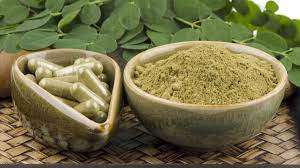Right from the ancient times down to modern era, human beings passed through a series of research and experiments to fully utilize the natural potential of agricultural sector especially in terms of food items.
Living close to nature in thinly populated areas four to five centuries back, the mankind usually banked upon fresh meat, fruits and vegetables and water flowing through rivers, brooks and streams.
But time changed and in recent centuries, the earth not only witnessed mounting population load but also rising need of edibles. This made the researchers and scientists to opt for research for enhancing agricultural produce through hybrid seeds and use of fertilizers and pesticides.
Multiple corporate giants emerged on the world map and introduced packaging for conservation of food with the use of supplements to meet local needs and export to other countries.
This voyage went on for decades when the experts felt that use of additives was resulting in multiple health hazards and researchers once again felt to promote organic food.
Many new ordinary and medicinal plants came under focus and scientists and health experts believe use of these ordinary plants are sometimes far beneficial for human health than the medicines.
Moringa is one of the series with its nutrition rich composition as it contains multiple variants and even in this modern age experts recommend it to overcome malnutrition.
“Moringa can help overcome malnutrition as its leaves and fruits were very rich in calcium, vitamins, potassium and protein,” informed Dr Zahid Rasheed, a fruit scientist at Ayub Agricultural Research Institute (AARI) Faisalabad.
“It has miraculous properties that’s why is called ‘Super Food’ and science has proved Moringa as one of the best nutritious and medicinal plants having powerful anti-inflammatory, antioxidant and tissue-protective properties,” he said.
Dr Zahid regretted that most often our people depend on allopathic medicines although we have vast potential for Moringa cultivation in terms of land richness and climate.
“We can easily cultivate it in areas of Sindh and Punjab. But, unfortunately this plants as well as plants like Neem, Amaltas, Ajwain, Cardamom, Black Pepper, Aloevera and Stevia were badly ignored in our country,” he remarked. “India was earning billions of dollars from export of medicinal plants but we are still faltering to explore this avenue.”
Moringa, he said, was not only nutritious but also a remedial plant as it was used to kill injurious worms and clean the ordinary water. “It has 14 percent more calcium than milk, 7 % more vitamin-C than orange, 4 percent more vitamin-A than carrot, 3 percent more potassium than banana and 2 percent more protein than yogurt.”
“This plant is also very helpful in treatment of joint pain, blood pressure and diabetes. If dried, its leaves can be used to control cholesterol and improve blood circulation,” Dr Zahid Rasheed said. “Oil extracted from Moringa can also be used for cooking purposes like Olive oil.”
Popularly known as “Sohanjna,” the Moringa is native plant of Pakistan, India and Nepal and its leaves, flowers, seeds, roots and bark having anti-bacterial ingredients, can be used to treat various diseases without any side effect.
Agricultural scientist Dr Shehzad Basra says that production period for Moringa is two to three years and oil of its seeds could not only be utilized for cokking purpose but also for lubrication of costly watches and making cosmetics.
“Moringa oil increases immunity if used as medicine. Its oil can also be used in place of pesticides to protect crops from attack of pests,” Dr Shehzad said.
“Dried leaves of Moringa can be used as green tea for relief from mental and physical fatigue. This tea is also helpful for overcoming insomnia,” he added.
Moringa was being used to overcome different nutritional deficiencies since long. Its leaves, pods as well as roots could equally be used for food, by converting them into ketchup, pickle, syrup, etc. One teaspoon power of its dried leaves was enough daily for an adult individual to fulfill nutritional needs. Therefore, nutritionists also deem it beneficial if it is made part of our daily edible items list.
“Around 50 percent of our population faces nutrition deficiency in their diet in terms of vitamin-A, calcium, vitamin-D, iron, zinc, iodine, etc. resulting in multiple diseases,” said a nutritionist Zuhair Shuja.
Deficiency of these nutrients in our diet result in diseases like parathyroid glands, weaker bones and teeth, heart and muscle problems, scurvy, bleeding gums, skin irritation, constipation, blood pressure, fatty liver and other problems, he said.
“When Moringa alone has five major ingredients, why we are not using it in our diet,” he remarked but the same time he has advised people to avoid self-medication. “Moringa should be used as medicine only under the recommendations of a nutritionist as he knows better about the use of a medicine or dietary supplement.”
Keeping in view the natural benefits of Moringa, there is need for state patronization to promote its cultivation as well as raising awareness for behavioral change to shift to herbs medication instead of rampant usage of allopathic drugs.























